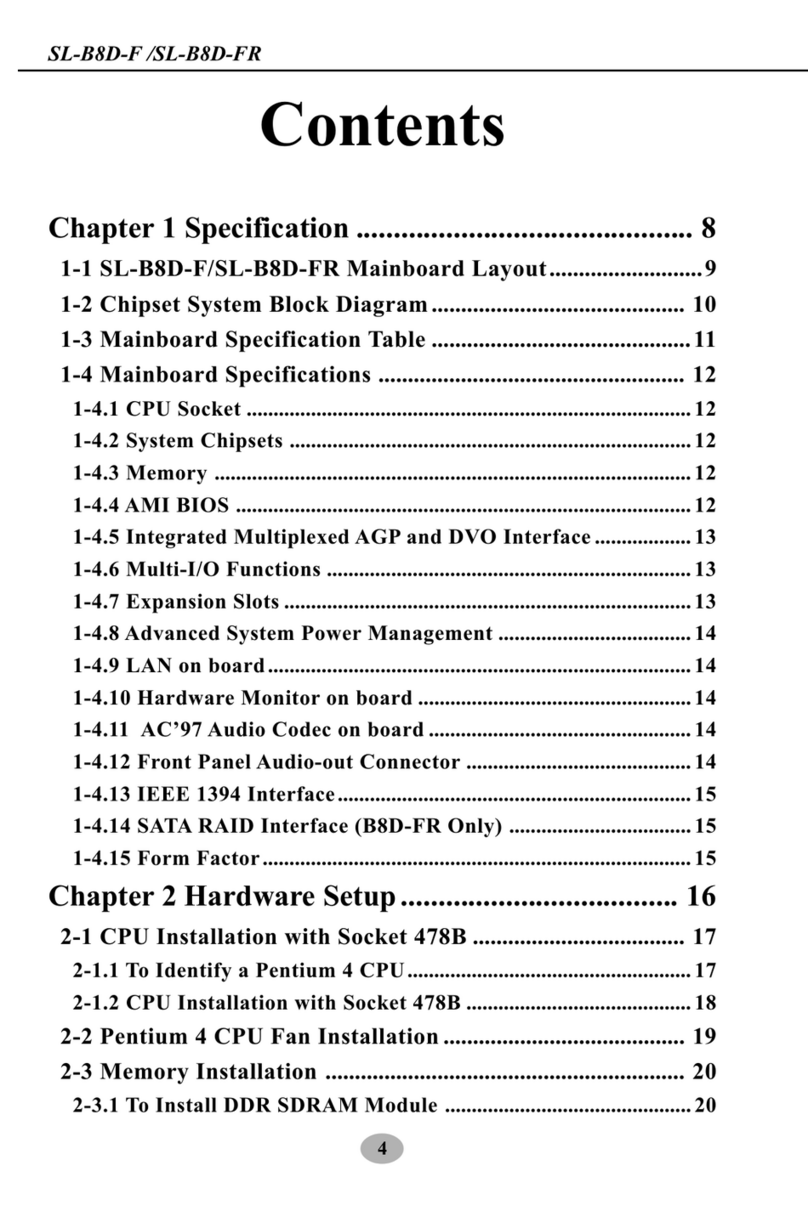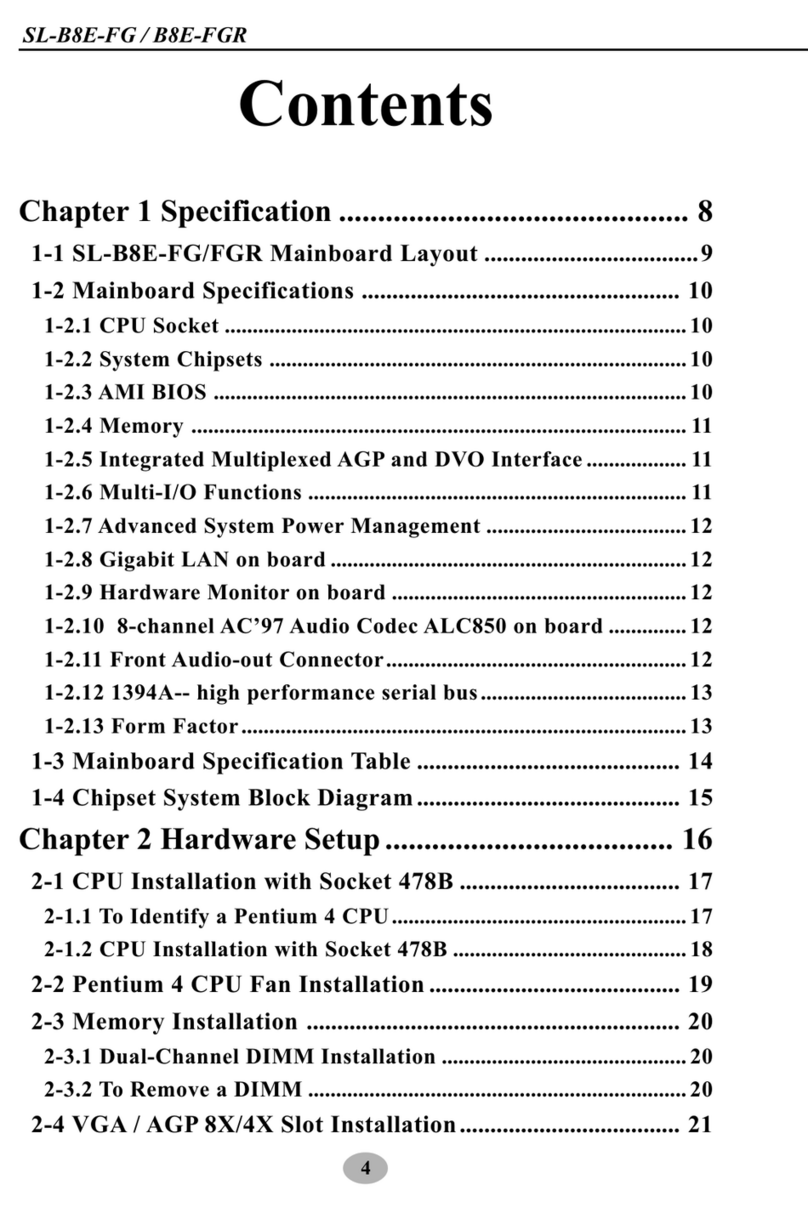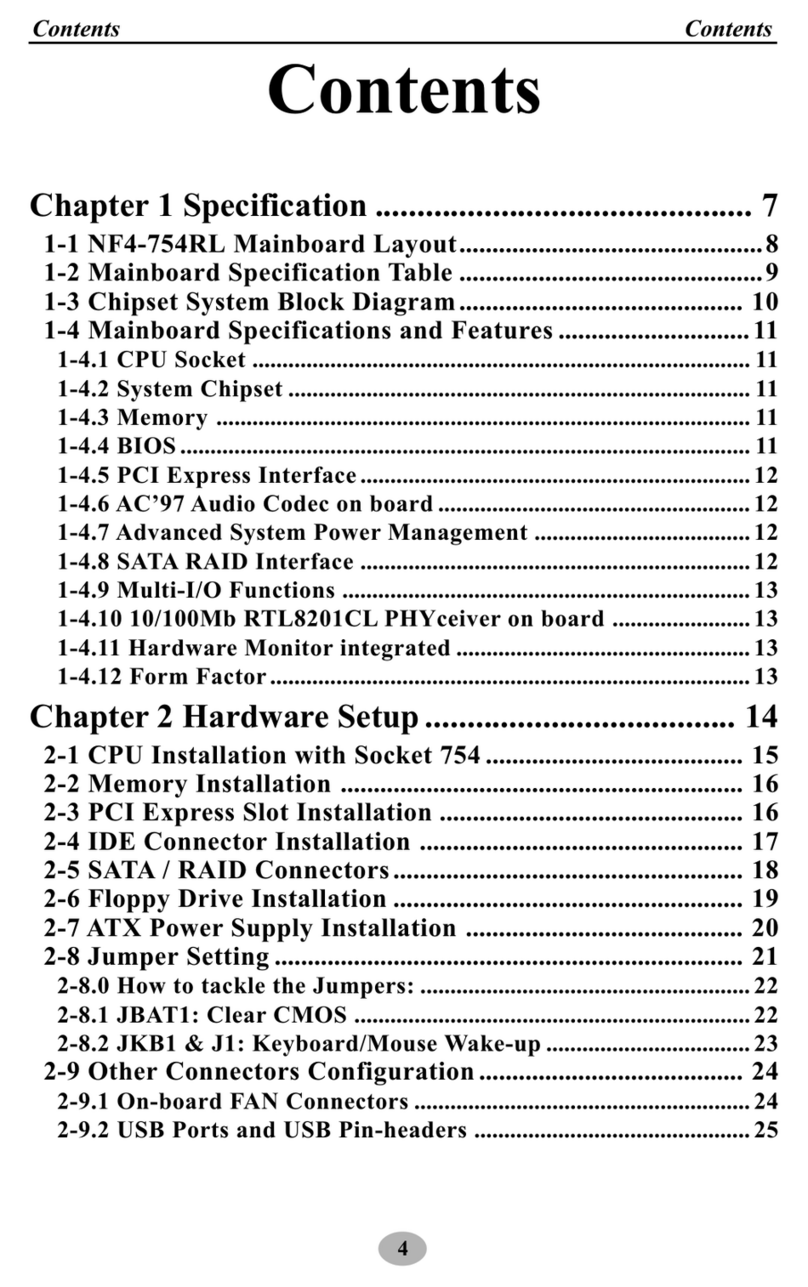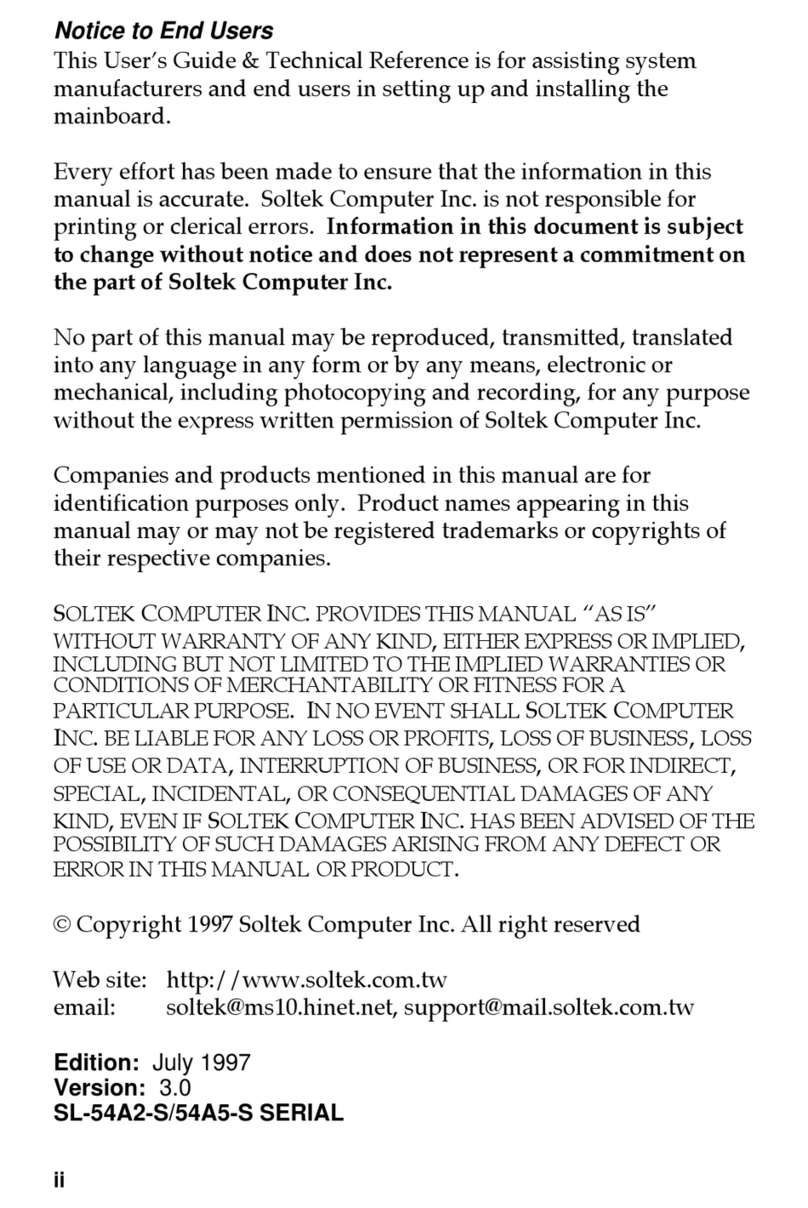SOLTEK SL-67EV1 Use and care manual
Other SOLTEK Motherboard manuals
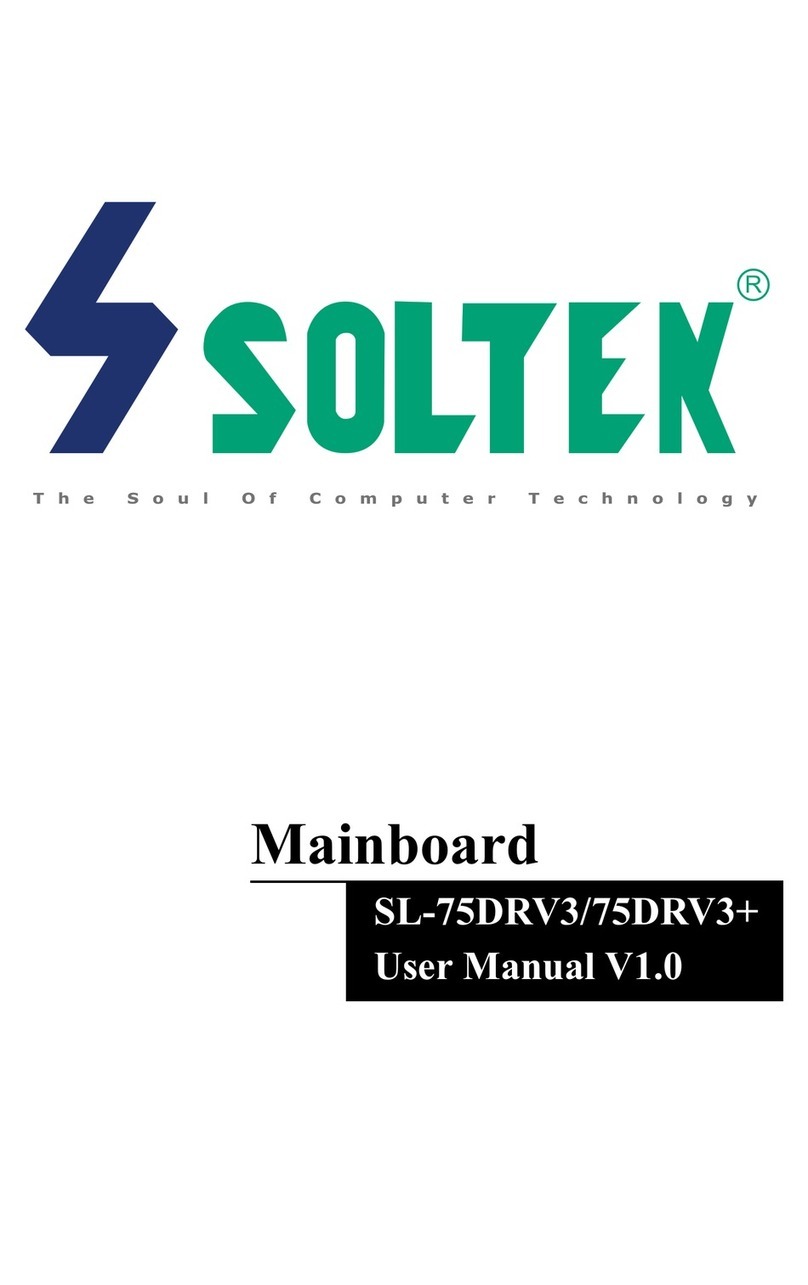
SOLTEK
SOLTEK SL-75DRV3/75DRV3+ User manual
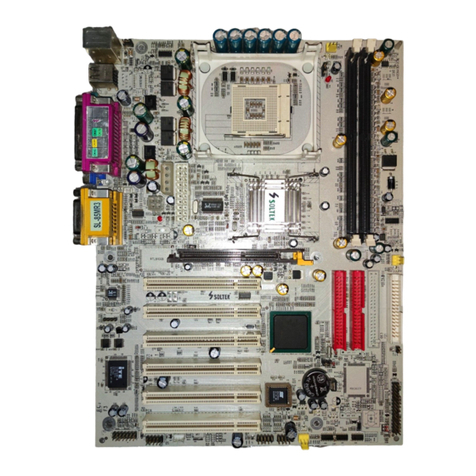
SOLTEK
SOLTEK 85MR3 User manual

SOLTEK
SOLTEK 75FRN Series User manual
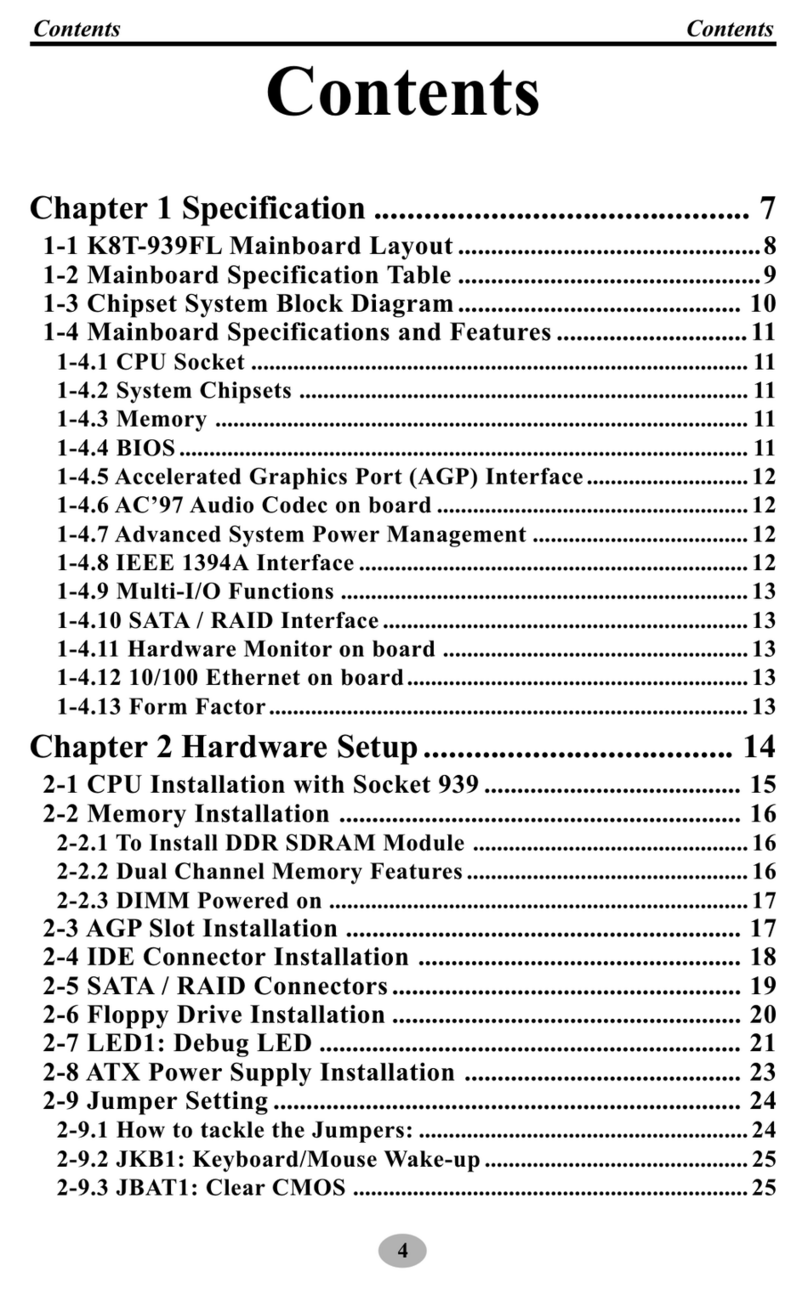
SOLTEK
SOLTEK SL-K8T-939FL User manual

SOLTEK
SOLTEK SL-65LIV User manual

SOLTEK
SOLTEK SL-65ME User manual
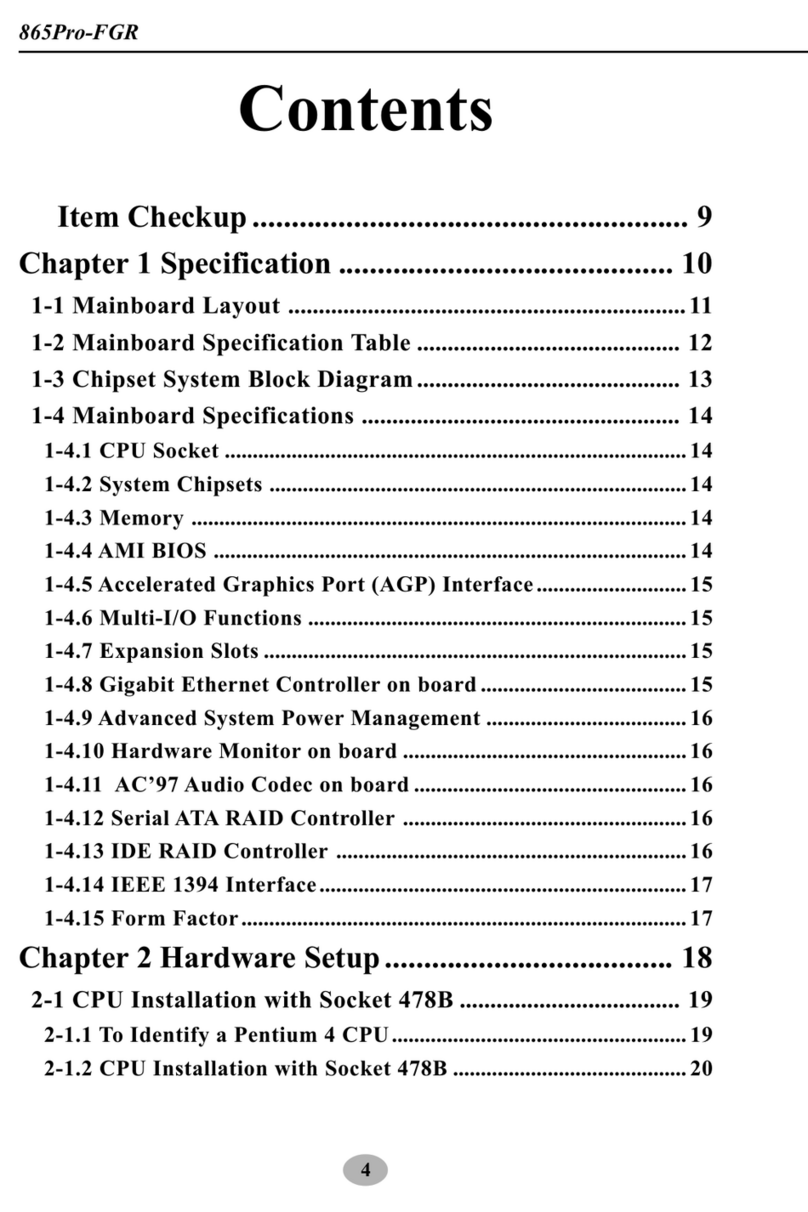
SOLTEK
SOLTEK 865Pro-FGR User manual

SOLTEK
SOLTEK SL-56H5 User manual
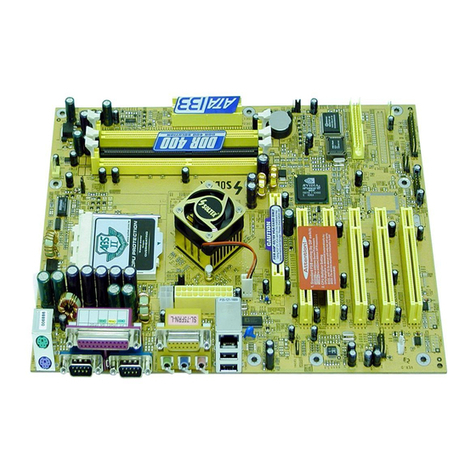
SOLTEK
SOLTEK 75FRN2 Series User manual
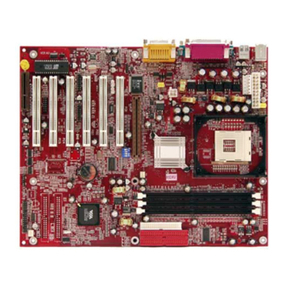
SOLTEK
SOLTEK SL-85DRV+ User manual
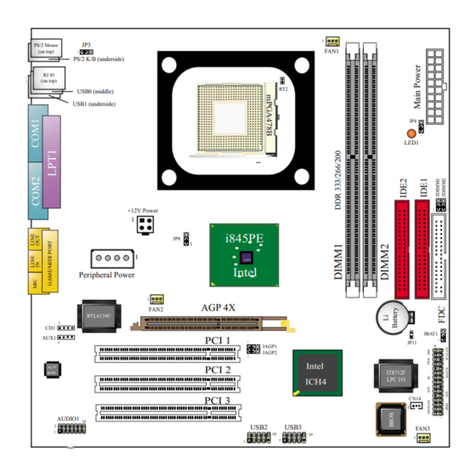
SOLTEK
SOLTEK SL-85DIR3 User manual
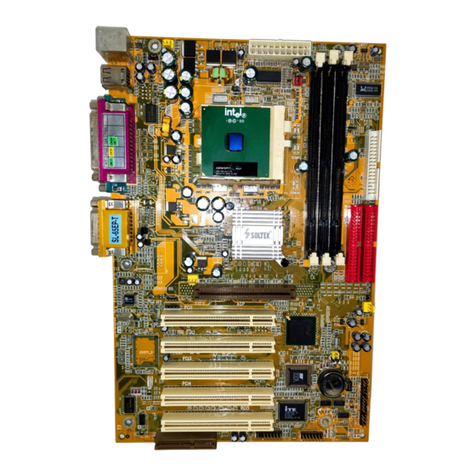
SOLTEK
SOLTEK SL-65EP User manual
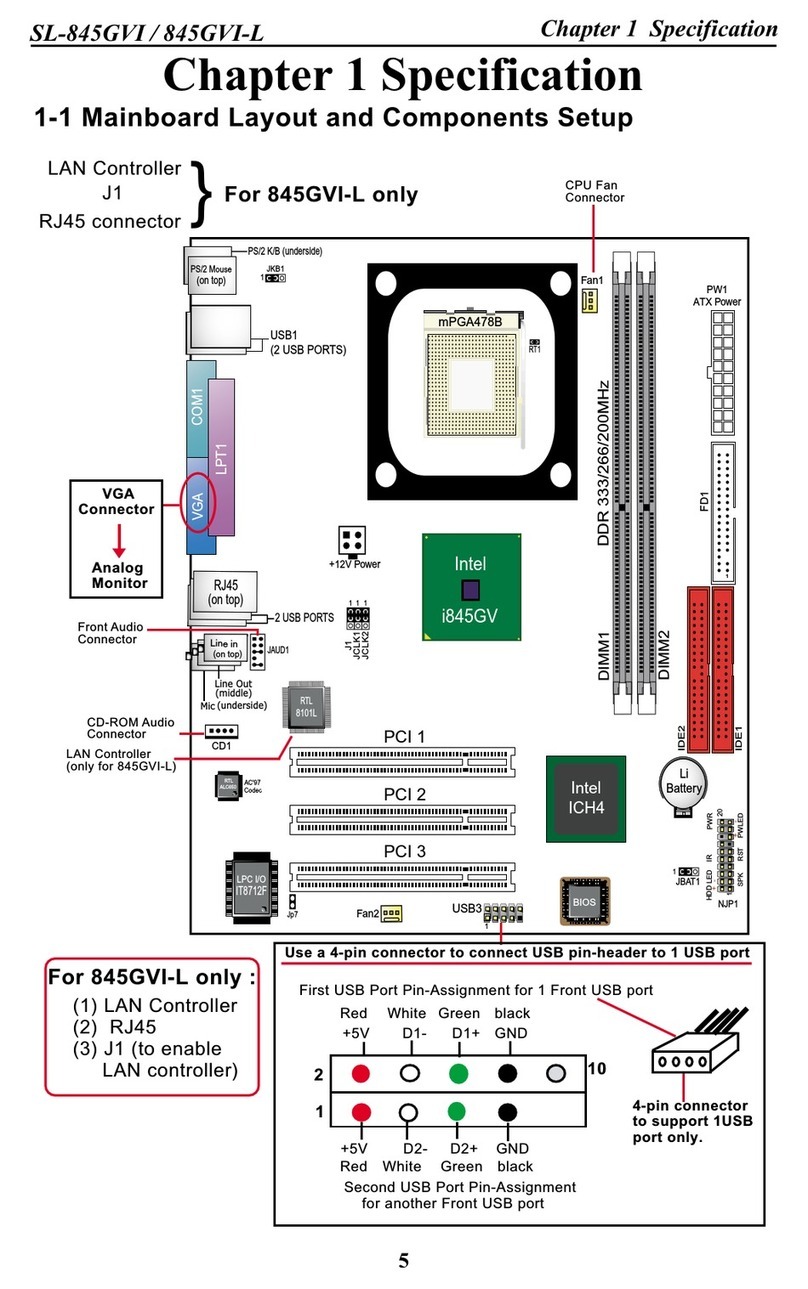
SOLTEK
SOLTEK SL-845GVI User manual
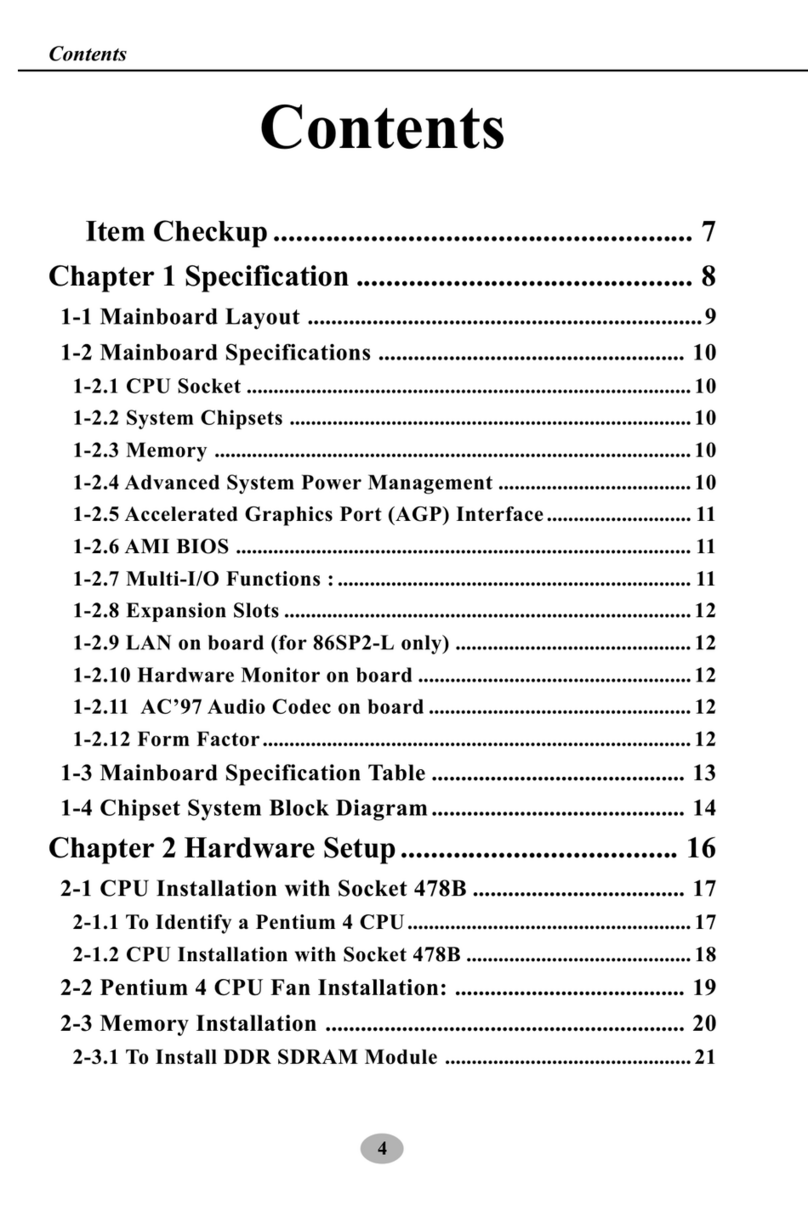
SOLTEK
SOLTEK 86SP2 User manual
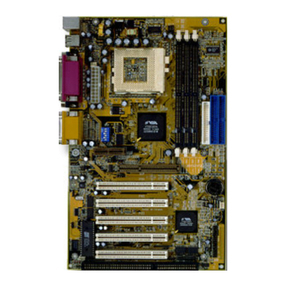
SOLTEK
SOLTEK SL-65FVB User manual
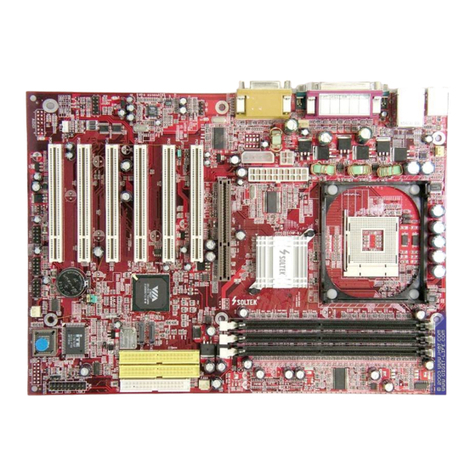
SOLTEK
SOLTEK 85DRV4-C User manual
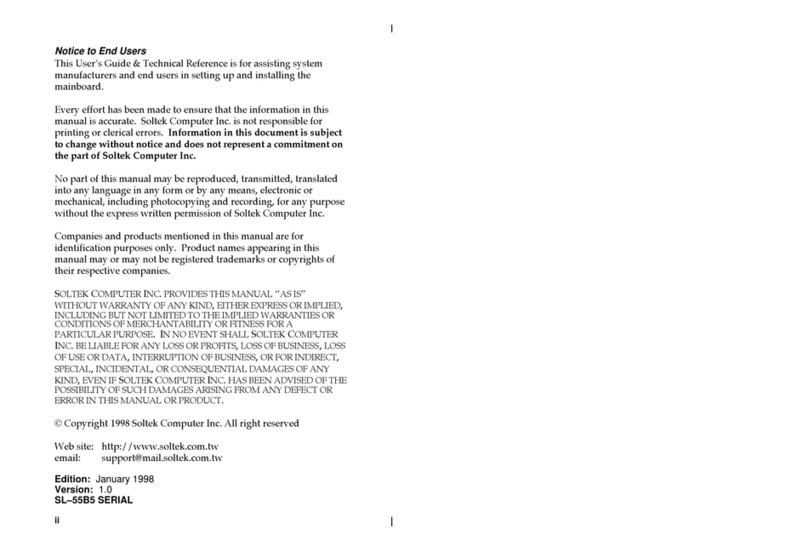
SOLTEK
SOLTEK SL-55B5 User manual
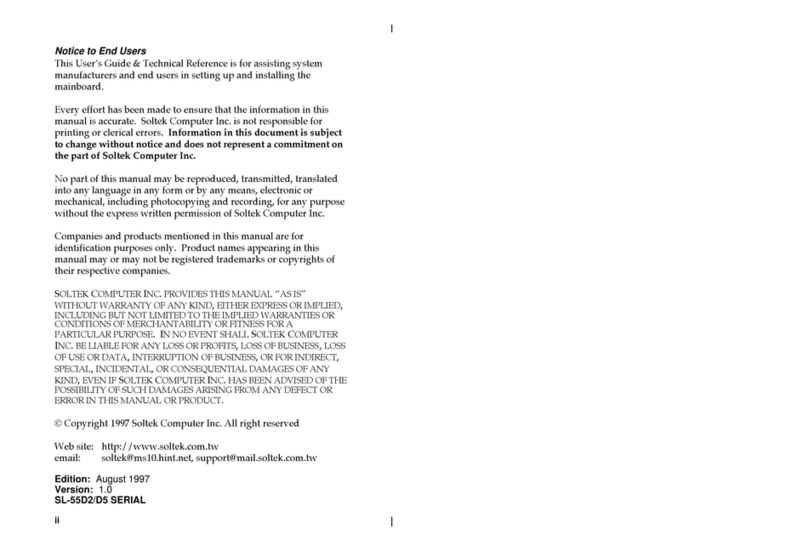
SOLTEK
SOLTEK SL-55D5 Use and care manual
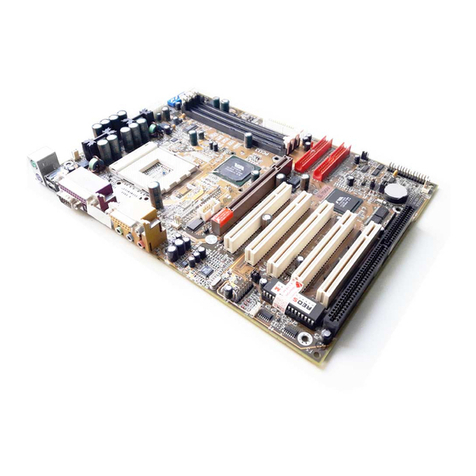
SOLTEK
SOLTEK SL-75KAV User manual
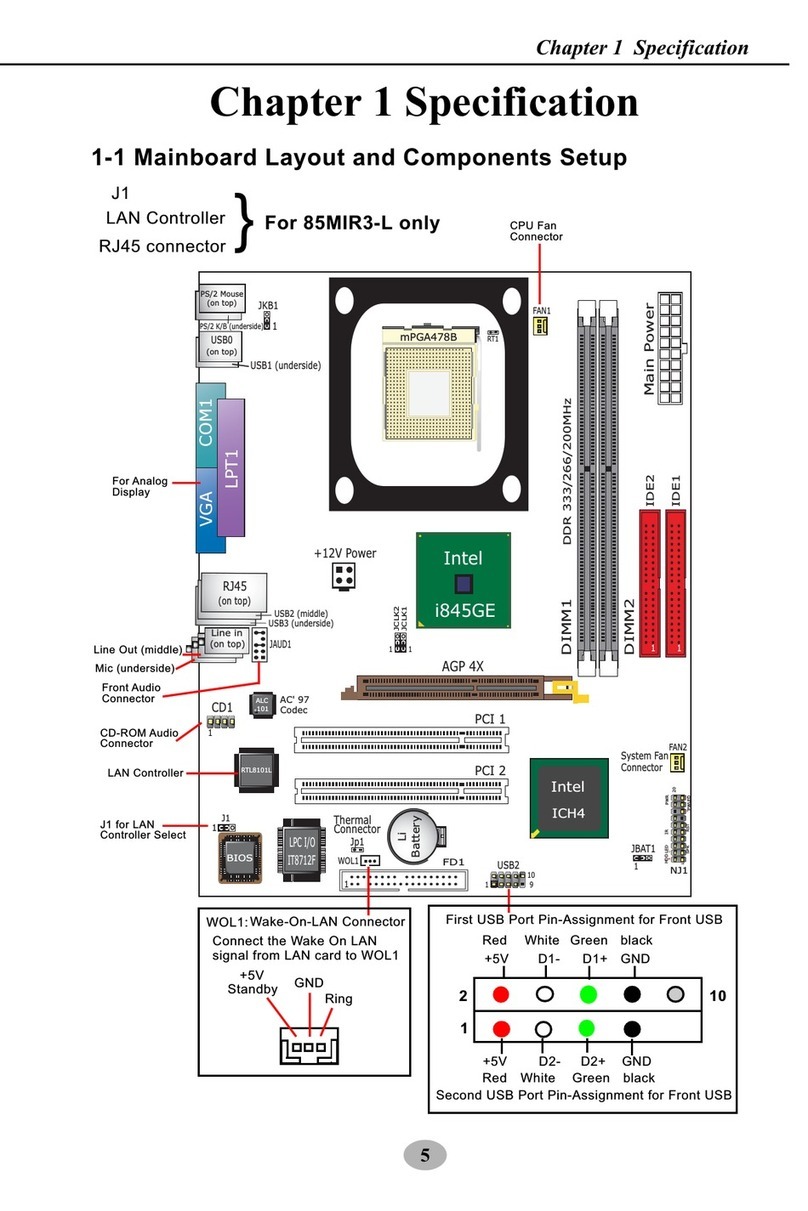
SOLTEK
SOLTEK SL-85MIR3 User manual
